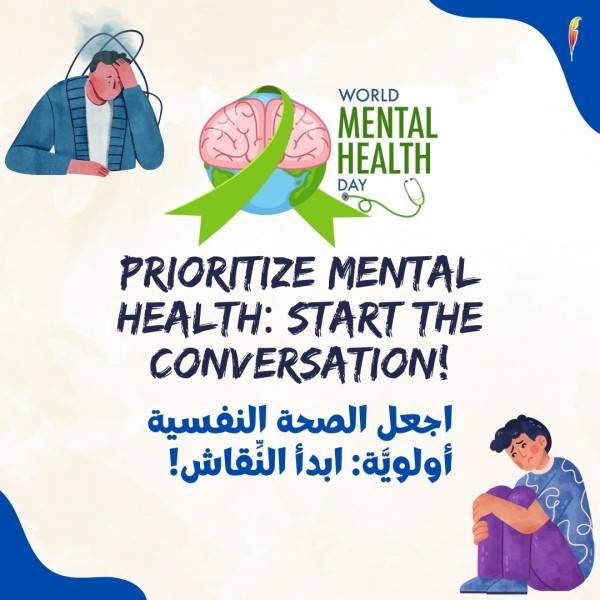
Mental Health in the Workplace Understanding, Addressing, and Thriving
1. Introduction:
Did you know that mental health conditions account for over 12 billion lost workdays annually?
This staggering statistic reflects the growing impact of mental health on workplace productivity. In a world where employees are increasingly expected to juggle high workloads, tight deadlines, and personal responsibilities, mental well-being has become a vital component of professional success. In this blog, we'll explore the history of mental health awareness in workplaces, current challenges, and actionable solutions to help both employees and employers thrive in a more supportive work environment.
2. The Origin of Mental Health Awareness in Workplaces:
Early Industrial Age:
During the Industrial Revolution, there was little to no concern for workers' mental well-being. Labor was primarily task-oriented, with a heavy emphasis on productivity and efficiency, often at the cost of emotional and psychological health. Factories were driven by output, and the emotional needs of employees were rare, if ever, acknowledged.
Post-World War II Shifts:
After WWII, workplace dynamics began to shift. Structured corporate environments emerged, and so did the concept of employee assistance programs (EAPs). While these programs were often basic, they marked the beginning of a new focus on employee welfare.
Modern Mental Health Awareness (Late 20th Century - Present):
From the 1970s and 1980s onward, the conversation around mental health in the workplace began to evolve. Research on stress and burnout gained traction, leading to the introduction of stress management programs and employee wellness initiatives. Organizations like the World Health Organization (WHO) also began to advocate for mental health as a critical component of workplace safety, further solidifying its importance.
3. Why Mental Health Matters in the Modern Workplace:
Impact on Productivity:
Anxiety and depression are among the leading causes of productivity loss, contributing to billions of dollars in economic costs globally. WHO highlights that depression alone results in over 200 million lost workdays annually, impacting both businesses and individuals.
Workplace Stressors:
Heavy workloads, lack of control, and poor work-life balance are among the most common workplace stressors today. These stressors contribute to burnout and mental health challenges, emphasizing the need for more supportive work environments that prioritize well-being alongside productivity.
Current Trends in Workplace Wellness Programs:
Today, many companies are implementing wellness programs designed to address these issues. Initiatives like mental health days, flexible work arrangements, and mindfulness programs are becoming popular ways for companies to support their employees' mental health.
4. How Employers Can Foster a Supportive Work Environment:
Building a Culture of Openness:
Fostering open communication is crucial for creating a mentally healthy workplace. Employers can reduce the stigma surrounding mental health by encouraging regular check-ins, providing anonymous feedback systems, and offering mental health training for managers.
Policies for Mental Health Support:
Flexible working arrangements, EAPs, and access to professional counseling are key policies that can significantly improve an employee’s mental health. These policies provide a safety net for employees who may be struggling with stress, anxiety, or other challenges.
Promoting Mental Health Resources:
Employers can also promote mental health by providing access to valuable resources, such as books and workshops on mental well-being. This not only shows employees that their mental health matters but also equips them with tools to manage their stress more effectively.
5. Promoting Mental Health Through Reading
The Power of Reading for Mental Health:
Books can serve as a powerful tool for mental health and personal growth. By diving into the pages of insightful and inspiring reads, both employers and employees can gain new perspectives and learn strategies for improving mental health in the workplace. Here are ten books that can help support mental well-being:
"Quiet Chaos" By Jason R. Sullivan
Quiet Chaos addresses anxiety, the most prevalent mental health issue, by offering a fresh perspective on treatment. Instead of promoting the idea of working harder or pretending to be happy, the book emphasizes the value of struggle and the importance of intimacy in coping with anxiety. It fosters an open dialogue between the author and the reader, encouraging a transformative shift in self-perception and worldview.
"Teaching Disorders" By Sameera Alhosani
This book invites readers to reflect on their beliefs, ideas, and dogmas, questioning their origins and evolution over time. It explores how teaching and learning influence our understanding of life, addressing the gaps in knowledge and the misunderstandings that may arise. The author examines "teaching disorders" that can shape our perspectives, aiming to deepen our understanding of how our thoughts and ideas are formed throughout the learning journey.
"Transformative Wellness" By Razan Ali
This book outlines five effective therapies that combine energy healing, body work, and nervous system regulation to address the effects of emotional, physical, and sexual abuse, as well as childhood dissociations. It features a self-crafted somatic yoga flow to release deep-seated anger and anxiety, Ayahuasca for alleviating panic and depression, and trauma-releasing exercises by David Berceli to help relax the nervous system. Additionally, it explores shamanic soul retrieval and the Soul Movement Method to heal energetic blockages and restore a sense of wholeness and self-worth.
"Last Words" By Mozah Hamdan Al-Jahwari
This book captures a journey of emotional highs and lows, reflecting on the transient nature of happiness and sadness. It explores themes of personal growth, self-discovery, and the struggle between authenticity and the masks we wear. Ultimately, it poses questions about the nature of truth and identity, inviting readers to contemplate their own experiences and resilience.
"Be Positive (B+)" By Houssam Sabeh Mohiedine
Be Positive offers life skills to enhance positive thinking through four flexible sections: The Ten Acts of Happiness, Skills for the Mind to Choose Its Positive Path, Reinforcing Positive Habits, and Be, for the Positive Mind to Form. Readers can start at any section, making it accessible to both specialists and general audiences. The book encourages conscious engagement with its skills in a simple, flowing style, fostering optimism and inviting reflection. Overall, it presents a fresh approach to optimistic writing for enjoyable and meaningful reading.
6. Actionable Steps for Individuals: Prioritizing Your Mental Health at Work:
Self-care Practices:
Simple yet effective self-care practices, such as taking regular breaks, setting boundaries, and seeking professional help when needed, can make a world of difference in maintaining mental well-being at work.
Building a Support Network:
Having a support network at work is essential. This could involve forming peer groups, joining mental health support communities, or simply reaching out to trusted colleagues.
Using Reading as Therapy:
Books can be a form of therapy, offering new perspectives and comfort during tough times. By incorporating reading into your daily routine, you can gain knowledge and solace while improving your mental health.
7. Conclusion:
In today's fast-paced work environment, mental health is more important than ever. By acknowledging its significance, fostering supportive environments, and utilizing resources such as books and wellness programs, both individuals and employers can make a lasting impact on workplace well-being. Take action today—prioritize your mental health, explore the recommended books, and join the conversation on creating healthier, more compassionate workplaces.
Connect with Austin Macauley Publishers for more such blogs, and submit your manuscript if you want to publish your work. You can also make a quick and easy submission through the online submission form. You can stay updated with our new releases and activities by joining our family of authors and readers on Facebook, Twitter, and Instagram.
We use cookies on this site to enhance your user experience and for marketing purposes.
By clicking any link on this page you are giving your consent for us to set cookies



